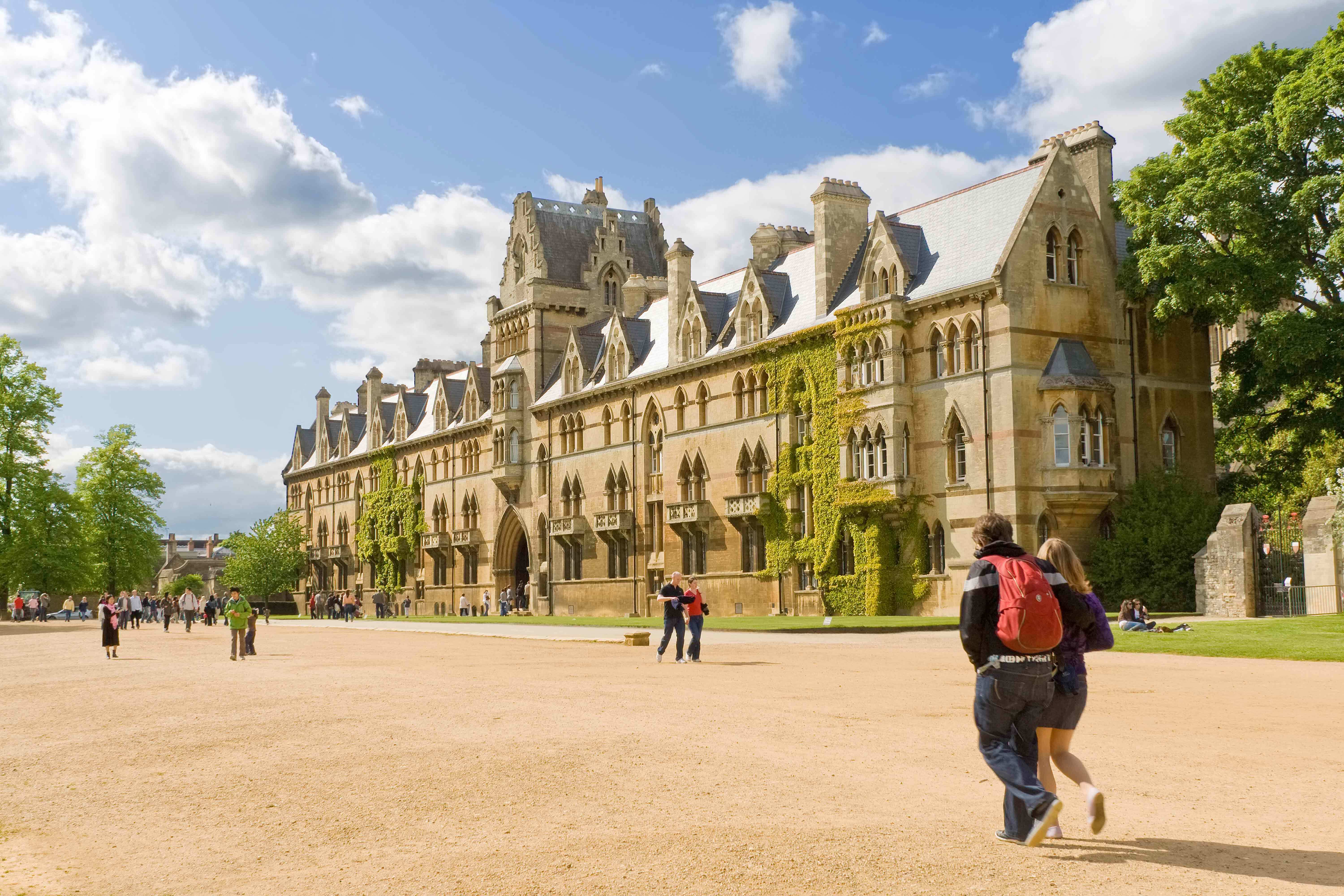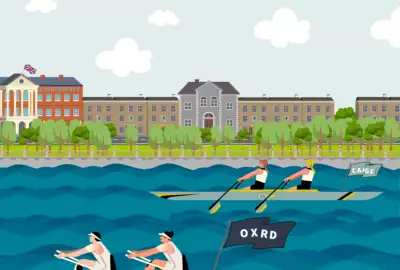Expert Insights
Oxford College Selection Guide
Published 24th October 2025 by Alastair

Choosing an Oxford college is one of the most important steps in the Oxford university application process.
Each of Oxford’s colleges has its own character, community, and traditions, and these differences can shape a student’s overall experience of university life.
At Oxford, every student belongs to a college as well as to the wider university. Colleges provide accommodation, dining halls, libraries, and close academic support through tutorials. Applicants can either apply directly to a specific college or make an open application, allowing the university to allocate one on their behalf.
For parents helping their child apply, understanding how Oxford colleges differ can make the process clearer and more manageable. This guide explains what makes each college unique, what to consider when choosing between them, and how college choice fits into the wider Oxford admissions process.

Every student is a member of a college, which provides much of their day-to-day academic and social life.
Teaching at Oxford is delivered through a combination of university-wide lectures and faculty classes, as well as small-group tutorials organised by the colleges. These tutorials are one of the defining features of an Oxford education, giving students the chance to discuss their subject in depth with experienced tutors and a handful of peers.
Colleges also play a key role in pastoral care. Tutors and welfare teams support students academically and personally, while the college environment fosters a strong sense of community. Facilities such as libraries, dining halls, and accommodation are provided by the college, meaning most students live and study within their college grounds for at least part of their degree.
When it comes to admissions, each college makes its own decisions about which applicants to admit, though all follow the same university-wide standards and selection criteria. Applicants can choose a specific college when they apply, or leave the choice open and let the university allocate them. Importantly, the quality of teaching is consistent across all colleges. No college is “better” or “worse” academically. However, the atmosphere, size, and traditions can vary widely.
Understanding how the college system works is the first step in helping your child find the environment where they will feel most at home and thrive both academically and personally.
The best choice often depends on the student’s subject, personality, and preferred style of living and learning.
Below are some of the main factors parents and students should consider when comparing Oxford colleges:
Not every college offers every course.
Some smaller or more specialist colleges focus on particular disciplines (for example, Engineering or Music).
Before applying, it’s essential to check which colleges accept applications for the chosen subject.
Tip: The University of Oxford website lists available subjects for each college in detail.
Oxford colleges vary widely in size, typically ranging from around 200 undergraduates at the smallest colleges to more than 400 or 450 at the largest.
Smaller colleges (e.g. Corpus Christi, Mansfield) often offer a close-knit community where students know most of their peers.
Larger colleges (e.g. St John’s, Magdalen) have broader facilities, more tutors, and larger student networks.
Consider whether your child would prefer a more intimate or a lively atmosphere.

Location can make a noticeable difference to day-to-day life at Oxford. Colleges in the city centre are within easy reach of lecture halls, libraries, and shops, but they tend to have a busier atmosphere and less green space.
Those situated along the river or slightly further out often provide a quieter environment and more open grounds. Walking or cycling distances vary, but colleges such as St Anne’s or Lady Margaret Hall are typically around ten to fifteen minutes from the heart of the city.
2.4With a mix of newer and older colleges, Oxford's facilities and accommodation can vary significantly from college to college. Each college manages its own facilities, which can vary in quality and style.
Check how many years of on-site accommodation are guaranteed.
Some colleges have modern ensuite rooms, while others have historic buildings with shared facilities.
Look into libraries, music rooms, gyms, or sports grounds if these are priorities for your child.
While all colleges meet the same academic standards, some are particularly strong in certain subjects. We will go through this in further detail in a later section, but for now, consider:
Researching where subject-specific tutors are based, if your child needs extra support during their time at Oxford. Oxford is a relatively small city however, so tutors (or students) can meet in the middle.
Looking at the number of fellows or researchers in your child’s chosen subject.
Every Oxford college has its own character, shaped by its traditions, student community, and setting. Some colleges are known for their formal atmosphere and long-established customs.
Christ Church, for instance, is one of Oxford’s most recognisable colleges, famed for its grand dining hall, which inspired the Great Hall in the Harry Potter films, and its historic sense of ceremony.
Magdalen College and Merton College also maintain strong traditions, including formal dining and regular use of academic dress, which can appeal to students who enjoy the sense of continuity and heritage that comes with Oxford’s history.
Other colleges, such as Somerville, Wadham, and Mansfield, are more relaxed and modern in outlook. They tend to have a less formal dining culture and are often associated with a more progressive and inclusive atmosphere.
Many colleges also have reputations that extend beyond academics: some are known for sport, others for music, drama, or politics. These elements can make a significant difference to a student’s experience, helping them find a community that aligns with their interests and personality.
Most Oxford colleges offer bursaries, grants, and hardship funds.
Some provide subject prizes, travel grants, or book allowances.
Parents may wish to explore these options early, as support varies between colleges.
Selecting the right Oxford college is ultimately about fit rather than prestige. Once the practical factors have been considered, it helps to think about how a college’s culture and environment align with your child’s academic interests and personality.
Students who thrive in smaller, close-knit settings may prefer a college such as Corpus Christi, where community life is personal and informal. Those who enjoy a busier atmosphere might feel more at home in a larger college like St John’s, which offers broader facilities and a wide range of student activities.
For some, the social and cultural feel of a college is just as important as its academics. A student drawn to Oxford’s historic traditions may be inspired by the formality of Christ Church or Merton, while others may prefer the progressive, modern outlook of Somerville or St Catherine’s.
Attend an Open Day: Visiting in person allows your child to get a genuine sense of the college’s atmosphere, facilities, and student community.
Take a Virtual Tour: Many colleges offer online tours, which can be useful for comparing different settings before travelling to Oxford.
Talk to Current Students: Conversations with undergraduates provide honest insights into daily life, from academic workload to social activities.
Explore the Surroundings: Encourage your child to spend time in the local area—like cafés, green spaces, and nearby facilities —to imagine what living there might really be like.
Once your child has a sense of what kind of environment might suit them best, it can be helpful to look more closely at the individual colleges. Each Oxford college has its own history, character, and areas of academic strength, but all share the same commitment to exceptional teaching and student support.
The table below provides an at-a-glance summary of the main Oxford colleges, including their size, location, and what they are best known for. It’s designed to help parents and students compare options easily and identify which colleges might offer the right balance of atmosphere, academic focus, and community.
| College | Size | Location | Known For | Ideal For |
|---|---|---|---|---|
| Balliol College | ~370 undergraduates | Central Oxford, near Broad Street | Academic excellence, especially in PPE and Law | Students seeking a politically engaged, intellectually lively environment |
| Brasenose College | ~370 undergraduates | Opposite the Radcliffe Camera | Friendly atmosphere and strength in Humanities | Students who want a sociable, central college with good tradition |
| Christ Church | ~430 undergraduates | Central Oxford, beside the Cathedral | Formal setting, grand architecture, strong in Law and PPE | Students drawn to Oxford’s historic traditions and a vibrant social scene |
| Corpus Christi College | ~250 undergraduates | Central Oxford, near Christ Church Meadow | Intimate and academically strong, Classics and Humanities | Students who prefer a small, close-knit community |
| Exeter College | ~350 undergraduates | Central Oxford, Turl Street | Balanced academic reputation and welcoming community | Students wanting a traditional, friendly college in a prime location |
| Hertford College | ~400 undergraduates | Central Oxford, near the Bridge of Sighs | Inclusive ethos and modern outlook; strong in PPE and Law | Students who value diversity and progressive values |
| Jesus College | ~350 undergraduates | Central Oxford, near Turl Street | Welsh heritage and strong student support | Students from varied backgrounds seeking an inclusive culture |
| Keble College | ~400 undergraduates | North Oxford, near University Parks | Striking architecture; strong in Science and Engineering | Students wanting modern facilities and an active student body |
| Lady Margaret Hall (LMH) | ~400 undergraduates | North Oxford, near the River Cherwell | First women’s college; relaxed, green setting | Students who prefer a friendly atmosphere and spacious surroundings |
| Lincoln College | ~320 undergraduates | Central Oxford, near the High Street | Supportive environment; strong in English and Law | Students seeking a balanced, academically focused community |
| Magdalen College | ~400 undergraduates | East Oxford, beside the River Cherwell | Academic excellence, beautiful grounds, choral tradition | Students who enjoy history, tradition, and lively college life |
| Mansfield College | ~230 undergraduates | North-central Oxford | Inclusive, progressive ethos; strong in Law and PPE | Students who value social awareness and a small community |
| Merton College | ~300 undergraduates | Central Oxford, near Christ Church | Academic rigour, especially in Maths and Sciences | Students who thrive in focused, high-achieving settings |
| New College | ~430 undergraduates | Central Oxford, near Holywell Street | Strong in Music, Law, and History; grand architecture | Students who value tradition with strong academic focus |
| Oriel College | ~330 undergraduates | Central Oxford, near Christ Church | Historic college known for sport and politics | Students seeking a traditional and competitive atmosphere |
| Pembroke College | ~400 undergraduates | Central Oxford, near St Aldate’s | Friendly, inclusive; strong in Law and Economics | Students wanting a sociable, modern environment with academic balance |
| The Queen’s College | ~350 undergraduates | Central Oxford, High Street | Music and Classics; elegant and traditional | Students who value formality and rich academic tradition |
| Somerville College | ~400 undergraduates | North Oxford, near the Radcliffe Observatory | Modern, progressive ethos; strong in Humanities and PPE | Students seeking an open-minded, inclusive environment |
| St Anne’s College | ~430 undergraduates | North Oxford, near the University Parks | Diverse, welcoming; strong in Sciences and PPE | Students who prefer a friendly, modern, practical atmosphere |
| St Catherine’s College (Catz) | ~500 undergraduates | East Oxford, near the River Cherwell | Modern architecture, large community, active student life | Students who like contemporary design and a dynamic social scene |
| St Edmund Hall (Teddy Hall) | ~400 undergraduates | Central Oxford, near Queen’s Lane | Strong in English and History; sociable and down-to-earth | Students looking for an active, supportive culture |
| St Hilda’s College | ~380 undergraduates | East Oxford, beside the River Cherwell | Beautiful riverside setting; strong in Arts and Humanities | Students who want a scenic, balanced, friendly environment |
| St Hugh’s College | ~450 undergraduates | North Oxford, leafy grounds | Expansive gardens; relaxed atmosphere; strong in Medicine | Students who value peace and space near the centre |
| St John’s College | ~400 undergraduates | Central Oxford, St Giles’ | Excellent facilities and results across disciplines | Students seeking a well-resourced, competitive college |
| St Peter’s College | ~250 undergraduates | Central Oxford, near Bonn Square | Small, friendly community with modern ethos | Students who value accessibility and a supportive atmosphere |
| Trinity College | ~300 undergraduates | Central Oxford, Broad Street | Compact, beautiful grounds; strong in Maths and Sciences | Students who prefer a smaller academic community in a central location |
| University College (Univ) | ~400 undergraduates | Central Oxford, High Street | One of the oldest; balanced and inclusive | Students seeking a mix of tradition, support, and central location |
| Wadham College | ~450 undergraduates | Central Oxford, Parks Road | Politically active, liberal, diverse; strong in Humanities | Students drawn to progressive values and vibrant college life |
| Worcester College | ~400 undergraduates | West Oxford, Beaumont Street | Large gardens, lake, and modern facilities | Students who enjoy open space and a relaxed, friendly community |
While every Oxford college offers exceptional teaching, certain subjects tend to have stronger representation or deeper traditions at particular colleges. This often reflects where specialist tutors are based or where a subject has a long-established academic community.
The table below highlights one college that is especially well known for each major subject, along with Oxford’s overall world subject ranking according to the QS World University Rankings 2025.
The rankings apply to the University of Oxford as a whole rather than to individual colleges, but they give a sense of the university’s global reputation across different fields.
| Subject | Top College | Oxford World Subject Rank (QS 2025) |
|---|---|---|
| Law | Magdalen College | #2 |
| Medicine | Christ Church | #2 |
| Engineering & Technology | St Catherine’s College | #2 |
| Computer Science | St Catherine’s College | #5 |
| Politics (for PPE) | Balliol College | #2 |
| Philosophy | Balliol College | #5 |
| English Language & Literature | St Edmund Hall | #1 |
| History | Balliol College | #2 |
| Geography | St Anne’s College | #1 |
| Mathematics | Merton College | #3 |
| Physics & Astronomy | St John’s College | #3 |
| Modern Languages | The Queen’s College | #2 |
| Biological Sciences | Magdalen College | #4 |
| Economics & Econometrics | St Catherine’s College | #9 |
Ranks shown are for the University of Oxford, not individual colleges. Sources: QS World University Rankings by Subject 2025.

Choosing the right Oxford college is about more than reputation or tradition. Every college offers the same outstanding teaching and academic standards, but each has its own community, atmosphere, and values. The best choice is the one where your child will feel comfortable, supported, and inspired to do their best work.
At Ivy Education, our UK University Consultancy team helps students navigate every step of the application process, from college selection to admissions tests and interviews. With tailored guidance and expert insight, we help families approach Oxford applications with confidence and clarity.
No college is objectively easier to get into. The university works to balance applications across all colleges, and admissions tutors share information to ensure fairness. Acceptance rates can vary slightly year to year, but this is usually due to application volume rather than differences in selectivity.
Not significantly. All applicants are assessed using the same criteria, and many are interviewed by more than one college. Around one-third of students receive offers from a college other than the one they applied to.
This is rare and typically only happens under exceptional circumstances, such as medical or welfare reasons. However, students often form friendships and attend lectures across colleges, so there’s a great deal of interaction beyond their own college community.
Yes, some have larger endowments and more extensive facilities, but the differences in student experience are smaller than many assume. Every college provides excellent teaching, accommodation, and welfare support, regardless of financial size.
No. Some subjects are only available at certain colleges, depending on where specialist tutors are based. It’s important to check the Oxford University course pages to confirm which colleges offer your child’s chosen subject.
If your child doesn’t have a strong preference for a particular college, an open application is perfectly fine. The university will allocate them to a college with fewer applicants for that subject, giving them an equal chance of success.
Oxford holds open days every summer, and most colleges also offer virtual tours and student-led Q&A sessions online. Visiting is an excellent way to get a sense of the different atmospheres and to help your child find where they might feel most at home.

















